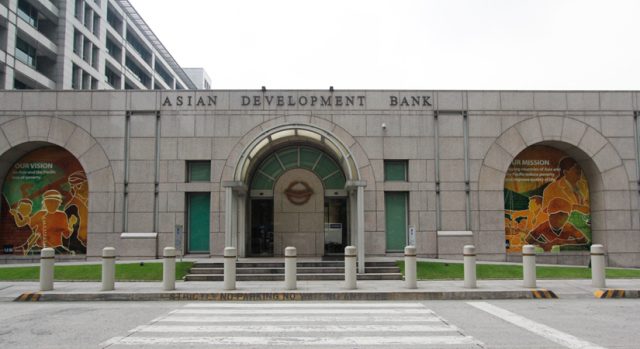
POETRY is a major focus of the European Union’s (EU) annual cultural celebration, which will be held online this year because of the ongoing COVID-19 pandemic.
Viva Europa 2021: Sama Sama Together will be held from May to June, with activities streamed through the European Union Delegation to the Philippines Facebook page (https://www.facebook.com/EUDelegationToThePhilippines).
Working together to put on Viva Europa 2021 are the EU Delegation to the Philippines, the Embassies of Belgium, the Czech Republic, Denmark, Germany, Spain, France, Italy (through the Philippine-Italian Association), Hungary, Austria, Poland, the Cultural Center of the Philippines, Ateneo de Zamboanga University, Dela Salle University, and the Far Eastern University.
EU Ambassador Luc Véron said this year’s cultural celebration highlights the partnership, friendship and the shared cultural values between the EU and the Philippines and in the context of the bilateral Partnership and Cooperation Agreement.
“Cultural cooperation is the best way [probably] to combat stereotypes and nurture dialog, open-mindedness, dignity, and mutual respect,” Mr. Véron said in an online press conference on April 22 via Zoom.
“Culture, after all, provides us a platform for dialogue and closer engagements. It defines our identity, and it makes us understand each other better. In other words, It’s what binds us together,” he added.
POETRY AND FILMS
Children and families will once again be in the spotlight of this year’s cultural program. The Lakbayin Natin ang EU (Journey through the EU) festival, held on May 16 (10 a.m.), will feature European stories and tales, games, languages, film, music, arts and crafts for Filipino children as prepared by the EU Delegation and the Embassies of the Czech Republic, Germany, France, Austria, Poland, and the Philippine-Italian Association. The art of creating friendship bracelets in line with the theme “Friendship and Partnership” will also be taught to kids during the festival.
A highlight of the festival is the poetry festival Bersong Euro-Pinoy, on May 21 to 28 (6 p.m.), which will feature both European and Filipino poetry.
Belgium’s fourth National Poet, Carl Norac, will recite his original works Pour Marcel Moreau (For Marcel Moreau), dedicated to the late Belgian writer, and Pour Mustafa, pour Mustafa Kör (For Mustafa, for Mustafa Kör), a poem dedicated to Mustafa Kör who will succeed him in Jan. 2022 as a National Poet. Meanwhile, Spanish poet Luis Garcia Montero — who is the director of Instituto Cervantes in Madrid — will recite his original work for Bersong Euro-Pinoy. And, for the first time, German artist/actress Luisa Katharina Davids will recite the German translation of Mi Ultimo Adios.
La Punta della Lingua poetry festival from Italy will once again join the Bersong Euro-Pinoy poetry recital this year. The poems will adhere to the theme of friendship and partnership.
Filipino poets from the Department of Literature, De La Salle University will read their original works in Filipino, Hiligaynon, Kinaray-a, and Waray. Filipino poets from Ateneo de Zamboanga University and Mindanao will read their pieces in their mother tongues.
Dora Šedivá, daughter of Czech Ambassador Jana Šedivá, returns to the festival with her friend Marika Štěpková, daughter of Czech Deputy Ambassador Jana Peterková. They will read Fortune (Štěstí), a poem by Adolf Heyduk, both in Czech and in English.
Det er Liv et Reise (To Travel is to Live) by Hans Christian Andersen will be read by Danish Ambassador Grette Siallasen. Victor Hugo’s poem Amis, Un Dernier Mot will be read by a representative from the French Embassy. Dante Alighieri’s Rima LII, a sonnet on friendship, will be read by Alessandro Milani, General Manager of the Philippine-Italian Association. Erich Fried’s Love will be read by Gerald Poellabauer and Crystal Eunice Dela Cruz of the Austrian Embassy. Labirynt (Labyrinth) by Nobel Peace Prize Winner Wisława Szymborska will be recited by Poland’s Chargé d’Affaire Jaroslaw Roman Szczepankiewicz.
On June 4 (6 p.m.), the cultural celebration will continue with the Euro-Pinoy Concert. The occasion includes a performance of the contemporary dance GUIDE, featuring Věra Ondrašíková and Co. from the Czech Republic. German visual artist Lisa Kossen will bring a musical number to life through her visual art. Other performers include jazz artist Eric Soulard from France, violinist Tullio Vidmar from Italy, Trio Artio from Austria, and jazz artist Artur Dutkiewicz from Poland
Musica FEUropa Choral Festival, the traditional choral festival of the EU Delegation and the Far Eastern University, will be held on all Saturdays of May from 8 to 9:30 p.m.
University students across the Philippines gear up for EU Whiz: Filipino Youth of the FEUture, an inter-collegiate competition spearheaded by the EU Delegation (it is endorsed by the Commission on Higher Education). Applications to join are open until May 1. For the requirements, visit https://www.euwhizfyf2021.engage.eu/.
Apart from the quiz, the EU Whiz: Filipino Youth of the FEUture has been expanded to include two more events online — the My Space, My Rights video competition, and the Green ECO I See digital art competition.
The European Union Film Festival and EuroPelikula film festival will be accessible online from May 5 to June 5. This year’s lineup includes: Acasa My Home by Radu Ciorniciuc (2020); Aurora by Miia Tervo (2019); Fire Will Come (O Que Arde) by Oliver Laxe (2019); Her Job (I Doulia Tis) by Nikos Labôt (2018); Our Struggles (Nos Batailles) by Guillaume Senez (2018); Perfumes (Les Parfums) by Gregory Magne (2019); and The Audition (Das Vorspiel) by Ina Weisse (2019).
WEBINARS IN BICYCLES AND DANTE
This year the festival will also feature a number of webinars on bicycle tourism and road safety, the works of Dante Alighieri, and European space programs.
Presented by the Danish Embassy and Intramuros Administration, the webinar on “Bicycle Tourism, Road Safety/Etiquette, Bike-Friendliness and People-Centered Architecture” will be held on May 21, 9.30 a.m.
The Royal Netherlands Embassy and Makati Business Club will conduct a webinar on “Starter Sessions: Your Guide To Be A Bike Friendly Business” on May 21 (3 p.m.) with Chris Bruntlett, Marketing & Communications Manager of the Dutch Cycling Embassy as a speaker. This webinar aims to help Philippine businesses learn from Dutch best practices on biking, so that they may localize these to the Philippine context. Topics include the business benefits of biking, examples of bike-friendly services and facilities provided by businesses in the Netherlands, and tips, advice, and best practices.
The Philippine-Italian Association presents Dante in the Philippines: Teaching and Translating Dante Today on May 7, (2 p.m.). The 700th death anniversary of Dante Alighieri offers the opportunity to talk about the relevance of his major work, the Divine Comedy, to contemporary Filipinos, and investigate two important aspects of cultural transmission: teaching and translating. Professor Paul Dumol of the University of Asia & the Pacific, and Professors Michael Coroza and Jonathan Chua of Ateneo de Manila University are the resource persons.
“Beyond the Stars, Reach out to the Skies,” a webinar on the Copernicus and Galileo space programs and how these technologies are used during the pandemic and in disaster preparedness, will be held on June 25, 3 p.m. Space scientists from the European Commission and Hungary will join a roster of local speakers and participants from the Philippines.
For more information, visit https://eeas.europa.eu/delegations/philippines_en. — MAPS















